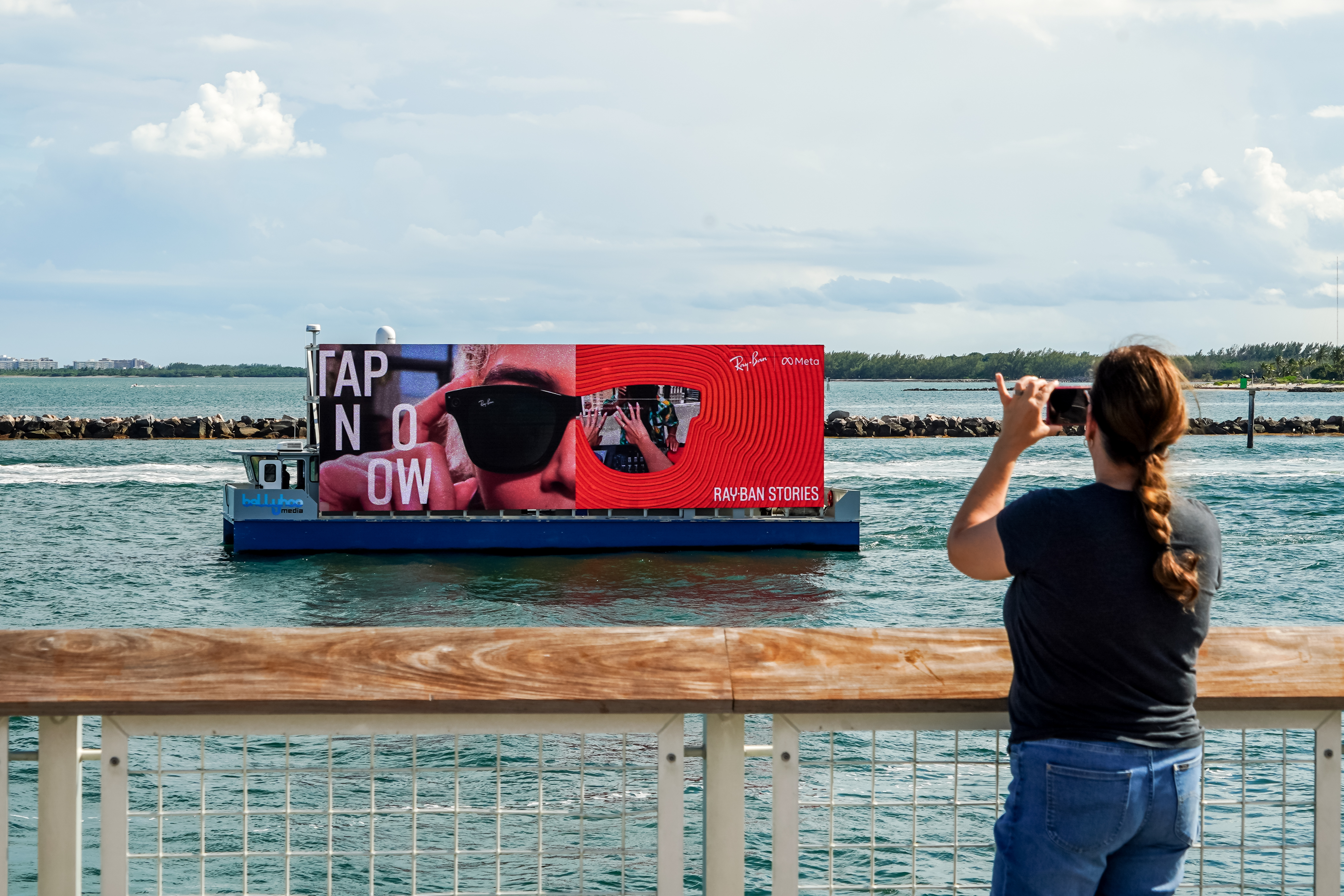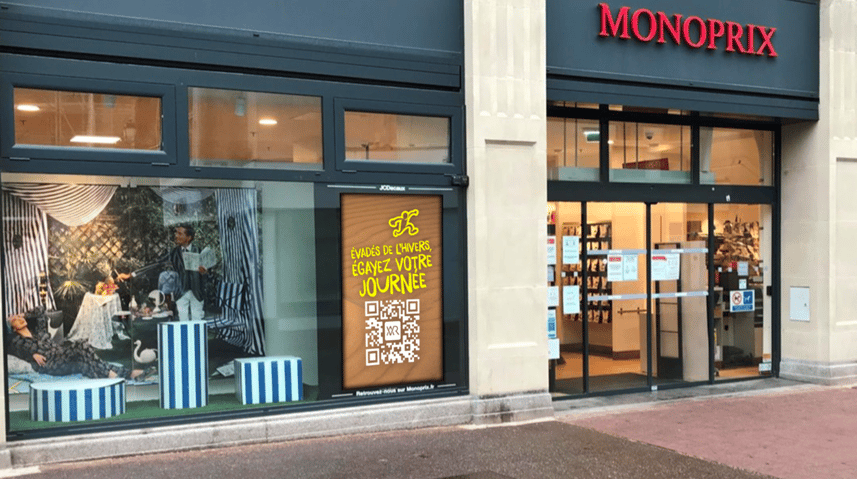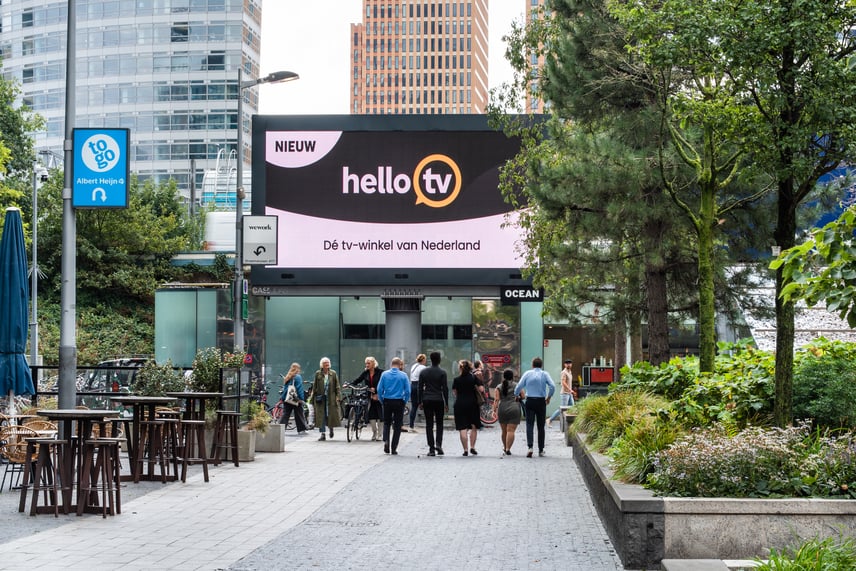
As advertisers push the boundaries of technology, brands have an increased appetite to accurately measure outcomes as a result of their marketing efforts. Out-of-Home (OOH) metrics or attribution has evolved to pinpoint the impact of media placements on direct business outcomes. However, it can also affect and amplify your other marketing tactics, integrating with your holistic marketing strategy.
OOH boasts the ability to provide extended reach to digital campaigns, as these placements exist outside of the audience’s home, phone, and digital devices. But OOH affects your marketing funnel beyond extending reach; OOH touch points incite your audience to take action and learn more about your brand.
While many tend to think of OOH as an upper-funnel awareness-based channel, studies suggest that advertisers can also leverage OOH to affect the consideration and buying phases of the funnel. This allows OOH advertisers to engineer media messaging in a market that amplifies their traditional or digital channel campaigns.
Let’s compare traditional and digital marketing channels to OOH, taking a look at how they can work together at all stages of the funnel to increase ROI using proven metrics.
Awareness
Television
While there have been observations about losing ground to streaming television, linear tv, i.e. cable or broadcast, is still a high reach channel with a large US footprint. Television can be purchased both locally and nationally. This gives OOH the opportunity to target local and hyperlocal markets, amplifying the reach of television campaigns.
According to a May 2022 study by OAAA , 45% of audiences use a search engine for further information after seeing a television ad for a brand. OOH produces a similar figure. Forty-one percent of audiences who see an OOH ad will use a search engine to gain more information about the product or service. Because both have a positive lift on search-based actions, running these two channels simultaneously in a given market will amplify related search queries for a brand.
Connected TV
Connected TV or Smart TVs offer advertisers a unique solution to broadcast their brand on living room screens at a much lower cost than linear television. Connected TV also uses robust technological and audience solutions for a more targeted approach.
This levels the playing field for smaller advertisers looking to advertise on TV. It also creates the opportunity to create cohesion across channels. Like OOH, Connected TV campaigns (CTV) are highly customizable to flight dates (campaign periods) and geotargeting.
OOH programmatic buying, which is expected to increase by 50% or more this year, works similarly to programmatic buying for CTV campaigns. This allows you to customize your target audiences to match your CTV target audiences across broad markets based on a bought number of impressions.
Radio
Similar to television, radio is a high-reach traditional channel with an audience that is often en route.
Though only 22% of audiences will search for more information after being exposed to a radio ad, because Radio has high overlap with OOH placements. Consider the media synergy created when audiences hear radio ads during their morning commute with the added visual touchpoint of OOH placements.
Consideration
Online Video
The consideration phase of the marketing funnel is a key time period for the audience to harness more information about your product as they assess your brand qualities and competition.
Thirty percent of audiences searched for a video after seeing an OOH ad. This number may seem low, but online video ads have an extremely high conversion rate. Audience flows on mobile and desktop devices are designed to drive the audience towards specific sites and landing pages to learn more or even make a purchase.
Social Media
Perhaps the largest shakeup to the digital marketing world, social media represents a platform for generating social currency and genuine discussion. OOH and social media have a great opportunity to influence each other for broader reach and education of your audiences.
Social media extends billboards into “digital” environments. Twenty-one percent of audiences post content on social media after seeing an OOH ad. The social sharing capabilities allow individuals to broadcast your message, and capture attention long after your placement has ended.

Website Visit
Your best salesperson is your website. According to studies, ~70% of buying decisions are made before your potential customer even reaches out to your sales team. Brand websites educate the consumer and provide critical information to help with their decision. To ensure advertisers are effectively utilizing their website to educate their audience, marketing efforts focused on driving audiences to the site need to ensure their audiences are qualified potential buyers.
OOH and website can work well together because OOH is a medium designed for fast impact, while websites are designed for providing information. OOH works best with limited text and eye-popping visuals to excite your audience so that they will want to learn more. Twenty-eight percent of audiences visited a website after experiencing an OOH ad. Nearly one-third of exposed audiences in a given market will respond to your first touchpoint.

Conversion
Search Engine
Monitoring search volume for both branded and non-branded keywords over time is a reliable indicator for audience interest in a given market. If audiences are searching for your brand, it was likely informed by a large activation or media execution.
As previously noted, 41% of US adults used a search engine to look up information after seeing an OOH ad. As media is deployed in-market, there are usually see search volume increases at both the brand level, as well as the category/industry level.
App Download
Mobile Measurement Partners are third-party providers that collect and organize app data to deliver a unified overview of a campaign’s performance. When connected to a Mobile Measurement Partner, OOH campaigns can determine how many app downloads were due to OOH campaign exposure.
Twenty-eight percent of audiences who viewed an OOH ad downloaded an app related to the ad. The on-the-go nature of mobile phones and app downloads matches the real-world environment of OOH placements, allowing your audiences to take the desired call to action immediately.
Web Purchase
The gold standard for conversion. Performance-based media is engineered to drive immediate sales. Most advertisers will have components of performance-based media paired with less intensive brand objectives such as awareness or consideration.
Twenty percent of audiences exposed to an OOH ad make a purchase online. Expected outcomes due to OOH would increase when incorporating brick-and-mortar sales data.
Next Steps
Out-of-Home provides effective solutions for influencing all phases of the funnel. To best understand the impact of OOH, utilize technology-based solutions such as Billups to effectively measure the desired outcomes your media will have in the market.
Want to learn more about how you can better integrate OOH with your current marketing mix at every stage of the marketing funnel? We are a team of data scientists and media planners who can provide you with OOH data and insights to make more effective integrated campaigns. Contact us today to learn more or submit an RFP to get started on your next OOH campaign.
Data derived from OAAA Comscore Online Activation Study, May 2022.
These Stories on OOH
Don't worry—we won't share your information.